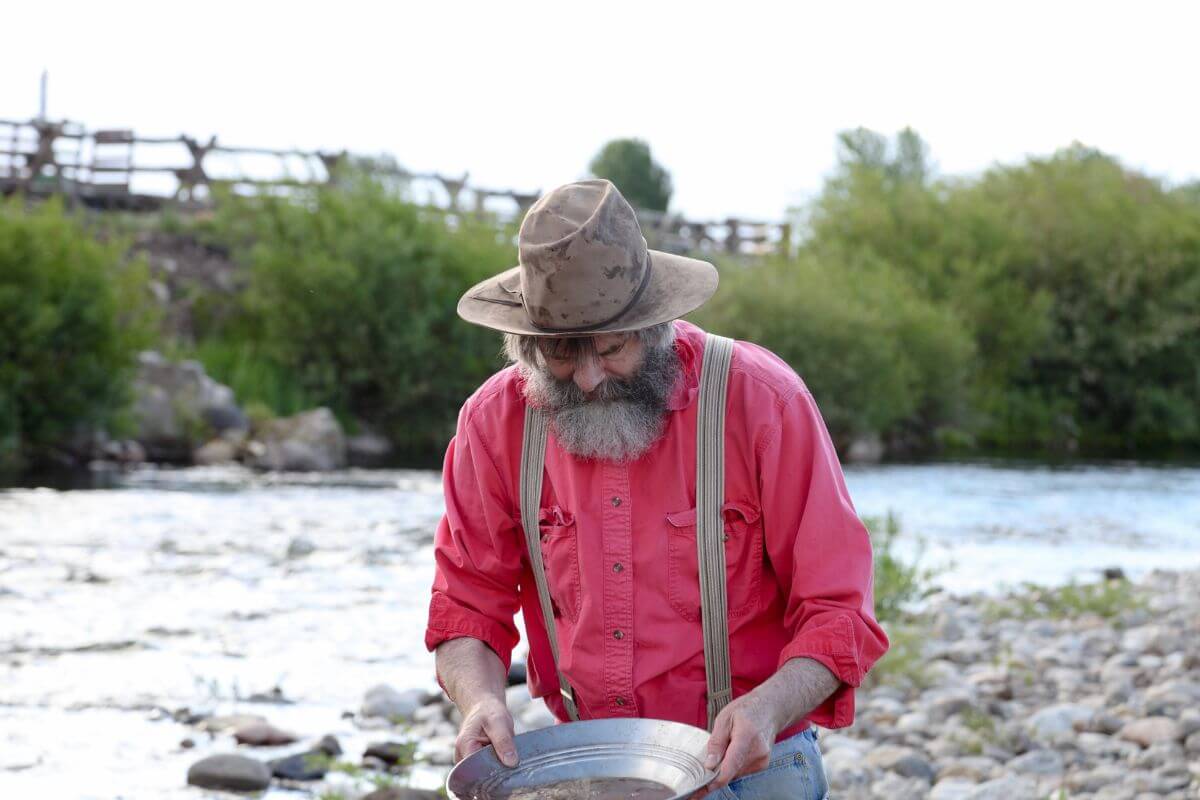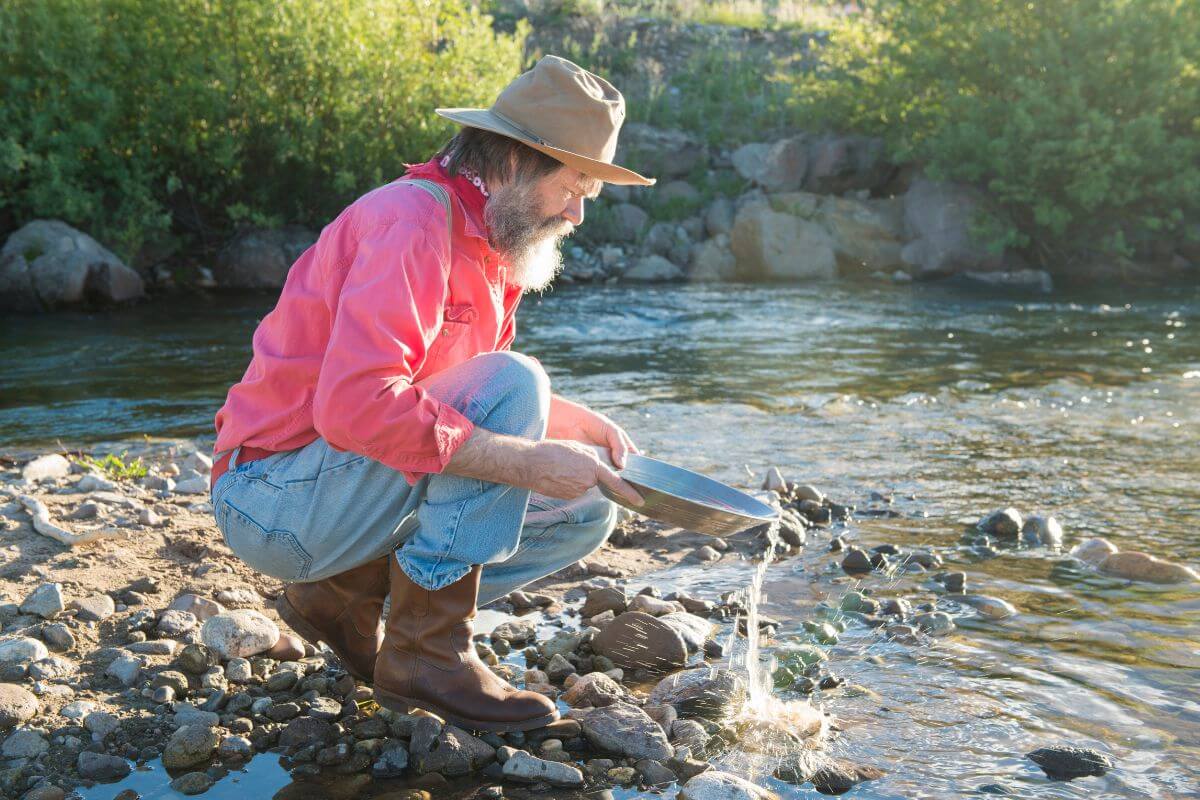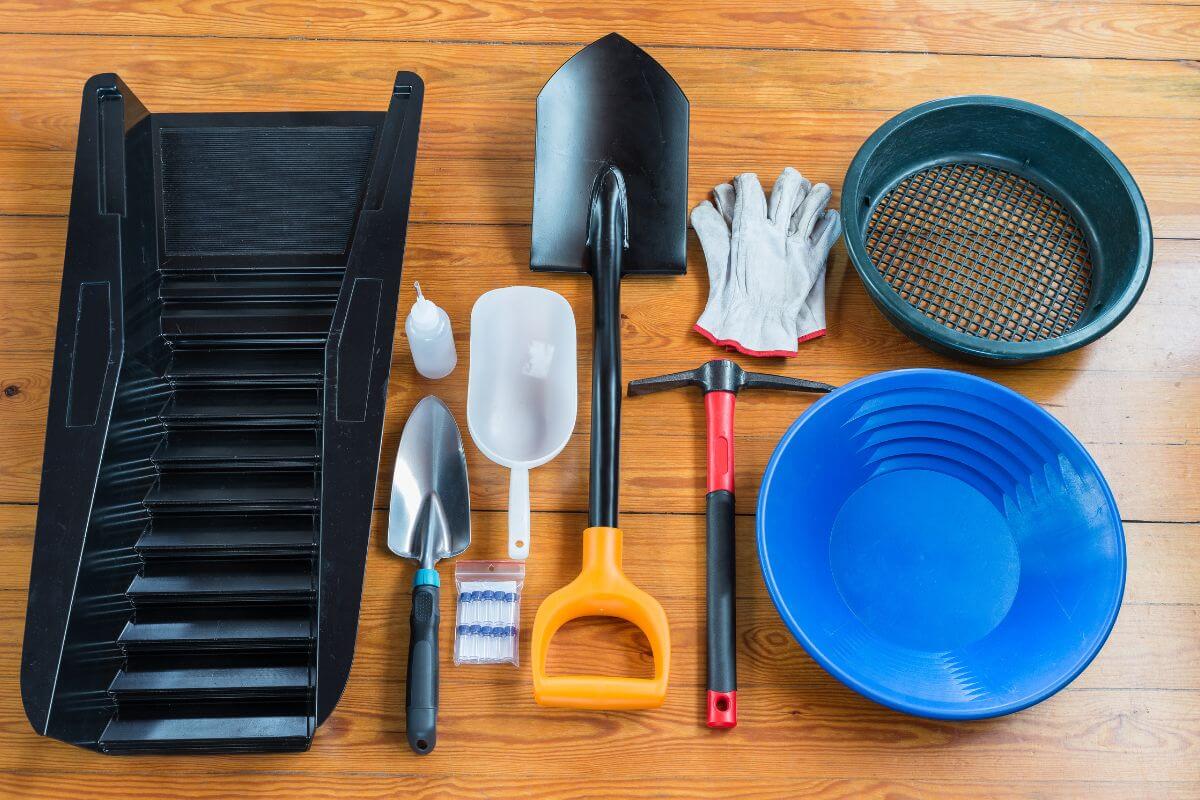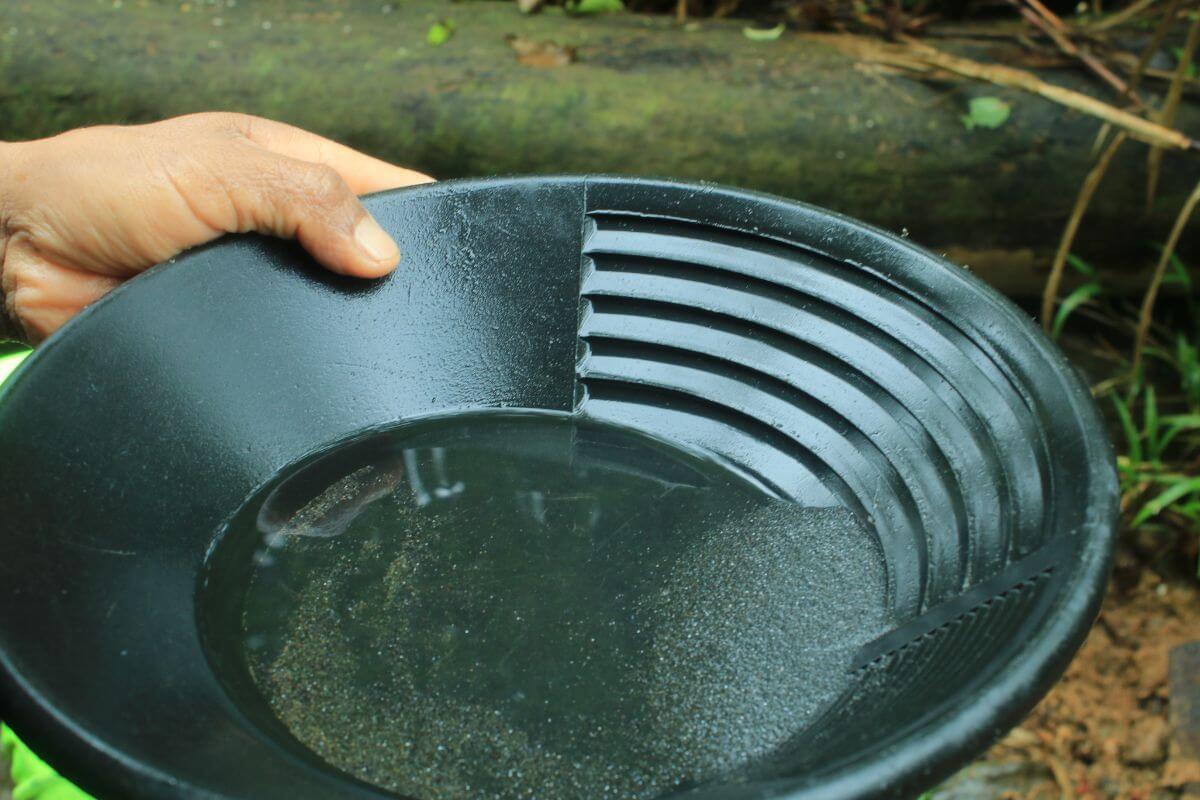Are you looking to strike it rich with gold panning in Montana?
Well, before you grab your gold pan and rush out to the nearest creek, there are a few things you need to know about gold panning laws in this state.
As someone who’s been researching and studying this topic for a while, I’m here to share my expertise with you and help you avoid any legal trouble.
- Related article: Montana Laws
In this article, I’ll be discussing everything you need to know about the rules and regulations surrounding gold panning in Montana.
Whether you’re an experienced gold panner or just starting out, this guide is for you. Let’s dive in and discover the dos and don’ts of panning for gold on Montana’s lands.
Montana Gold Panning History

When I think about Montana, gold panning is one of the first things that comes to mind. The state is rich in gold deposits and has a history deeply rooted in gold mining that goes back to the Gold Rush days.
Back then and even now, gold panning remains to be an affordable exploratory method of mining.
A prospector would come to Montana and search for gold in any reach of creek or stream that had gently moving stream edges or shallow pools.
During old times, any gold or other valuable minerals found belonged to the one who panned it.
It wasn’t unusual for a prospector who wished to place a mine to pan for gold in a creek for a number of weeks to determine if the creek could potentially yield a substantial amount of gold.
Many of the placer mines in Montana began as productive gold panning streams. In fact, some of the richest gold-bearing areas in the state were discovered as a result of gold panning.
While much of Montana is no longer home to active gold mining activities, gold panning is still a popular activity in many parts of the state.
Gold panning is now more of a hobby than an income-generating source.
Montana may not be as synonymous with gold panning as it was before, but it remains an integral part of the state’s history and a popular pastime for both locals and visitors alike.
Montana Gold Panning Law

As a passionate traveler, I love exploring different types of activities in new places. When I heard about gold panning in Montana, I was immediately intrigued.
Upon research, I found that Montana’s Gold Panning Law can be found in the USDA’s official guide for prospecting.
As defined there, prospecting is searching for valuable minerals.
The practice of prospecting can range from collecting hand samples of mineralized rock and gold panning to using metal detectors and operating small sluices for dredges.
A restriction is imposed however in such a way that these activities should not cause a significant surface disturbance.
Prospecting activities that do not cause disturbance usually don’t require a permit.
However, if you think that your prospecting might cause a significant surface disturbance, it is important to submit a Notice Of Intent (NOI) to the local District Ranger.
Disturbance can come in the following forms:
- Use of explosives
- Use of power equipment for excavation
- Driving vehicles off public roads or trails
- Clearing or removing vegetation
- Storing petroleum products or other hazardous or flammable materials near streams
- Camping in one place for more than 14 days.
Certain areas such as the following are excluded from prospecting:
- Wild and Scenic River corridors
- Historical or archeological sites
- Campgrounds
- Wilderness areas
- Administrative sites
- Areas “withdrawn” from mineral entry
It’s vital to keep in mind that not all national forest lands are available for prospecting.
Keeping the regulations and safety precautions in mind, gold panning in Montana can be a fun and exciting activity.
However, it’s crucial to make sure that you are following the Montana Gold Panning Law, not only for your safety but also for the environment.
By understanding the rules and restrictions, you can ensure that your gold panning experience will be a memorable and safe one.
Speaking of comprehending local regulations, here are some peculiar laws in Montana that demand awareness from anyone intending to visit the state.
Where to Gold Pan in Montana

If you wondering where this fun activity is usually done, here are some remarkable spots to gather precious metals in Montana:
- The Libby Creek Recreational Gold Panning Area – is one of the most popular areas for gold prospecting, with an easily accessible stream and plenty of gold deposits.
- The Missouri River – is a major river that spans the entirety of Montana. Some notable placer gold concentrations can be found in El Dorado Bar, Dana’s Bar, McCune Bar, Gruel Bar, Spokane Bar, and French Bar.
- The Big Hole River – numerous tributaries such as Basin Creek, Fish Creek, Soap Gulch, and Moose Creek have been spotted with placers and they all flow into the Big Hole River.
- Boulder River – while it has fairly limited gold occurrences these days, several of its tributaries were once very popular areas for miners in Montana. These tributaries include Cataract Creek, Overland Creek, and Muskrat Creek.
- Blackfoot River – Beaver Creek, Carpenter Creek, Gold Canyon Creek, and Ophir Creek are some of the richest tributaries with quality placer gold deposits in this area.
- Yaak River – was first reported to have placer gold in 1864 and sightings in this area picked up in the later years. Go ahead and try your luck in this ancient location.
- Clark Fork River – known tributaries for this river with several placer gold sightings over the years include Ninemile Creek, Gold Creek, and French Creek.
- Bitterroot River – Hughes Creek is a tributary that feeds gold into this river. Although not many sightings have been reported recently, it’s still worth checking out due to its rich history of mining in the area.
- Yellowstone National Park – particularly Montana Bar and Montana Gulch, has a rich history of gold discoveries and limited gold occurrences that could be worth your time.
How to Gold Pan in Montana

If you’re looking for a fun and rewarding way to spend your time in Montana, why not try gold panning?
With a bit of research and the right equipment, you can easily get a hold of a placer gold or two in no time if you are lucky! So how do you gold pan in Montana? Check out the steps below.
- Find productive streams, such as the Libby Creek, or take a pick from the locations that we mentioned above, where gold has been previously found.
- Once you’ve located a spot where the water slows down, gather your gold pan and shovel, and settle into the water.
- Submerge your pan into the location. You may use a shovel to help you dig through the clumps of dirt and gravel while you fill your pan.
- Remove your pan from the water and shake it to break up any larger clumps of dirt and gravel.
- Continue shaking and swirling the pan until only the heavier materials, like gold flakes or nuggets, remain.
- Carefully remove the water and lighter materials from the pan until you are left with your precious gold.
With these simple steps, you’ll be gold-panning like a pro in no time!
Montana Gold Panning Law Final Thoughts

As someone who has spent a fair bit of time navigating Montana’s public lands in search of rich gold deposits, I can attest to the fact that gold panning is an incredibly popular activity in this part of the country.
From the Missouri River to Yellowstone National Park and beyond, there are numerous places where placer gold can be found.
In fact, as many seasoned prospectors know, Montana is home to several productive gold panning streams that offer eager treasure hunters the chance to strike it lucky.
That being said, it’s important to note that gold panning in Montana is not a free-for-all – there are specific laws and regulations in place that dictate how, when, and where this activity can take place.
These laws are in place not only to protect the environment but also to ensure that the gold panning experience is, for lack of a better word, responsible.
Prospective gold panners should take the time to not only familiarize themselves with the law but also learn tips and tricks to ensure that they are panning responsibly.
Montana Gold Panning Law FAQs
1. Where Was the Most Gold Found in Montana?
During Montana’s gold rush days, the richest gold-bearing areas were located in Alder Gulch near Virginia and Nevada Cities.
This area held huge gold deposits and historic placer gold productions, with some claiming it was richer than anywhere else on Earth.
2. Can You Find Gold Nuggets in Montana?
Yes, gold panning on Montana’s Rivers will still produce gold nuggets and fine gold but the chances of you finding it is quite slim. While finding these treasures in Montana is not guaranteed, there have been notable discoveries in the past.
3. What Part of a River Is Best for Gold Panning in Montana?
The best parts of a river for gold panning are where the water widens and slows down, allowing the gold to accumulate and settle.
Additionally, areas where the river changes direction or has natural obstacles, like rocks or boulders, can have productive amounts of gold. Also, banks and inside corners of river bends can also be rich in gold deposits.
4. Is Gold Available on Every River in Montana?
When it comes to gold panning in Montana, whether or not you’ll find any gold largely depends on the river or stream you’re exploring.
While gold can technically be found in all rivers, the concentration is typically extremely diluted and not economically profitable to extract.
Some lucky experienced gold panners have found batches of massive 27-ounce gold nuggets! But for most people, finding small flakes or amounts of placer gold is more realistic.
5. Are There Any Restrictions on Where I Can Go Gold Panning in Montana?
It’s essential to research the area you plan to visit to determine if it’s an open or closed location.
Additionally, some areas may require permits or have specific regulations to follow, such as using non-motorized equipment. Be sure to check with local ranger district offices for any updates or seasonal closures due to environmental factors.
Delve into the mysteries of Montana deeper by checking out these other awesome content:
- Open Container Regulations in Montana
- Is Property Shared in Montana
- Montana’s Open Carry Policy
- Drinking Laws in Montana
- https://www.fs.usda.gov/Internet/FSE_DOCUMENTS/stelprdb5360587.pdf
- https://www.fs.usda.gov/activity/kootenai/recreation/rocks-minerals/?recid=43369&actid=59
- https://www.umt.edu/this-is-montana/columns/stories/gold-western-montana.php
- https://www.fs.usda.gov/detail/kootenai/recreation/rocks-minerals/?cid=stelprdb5410850

